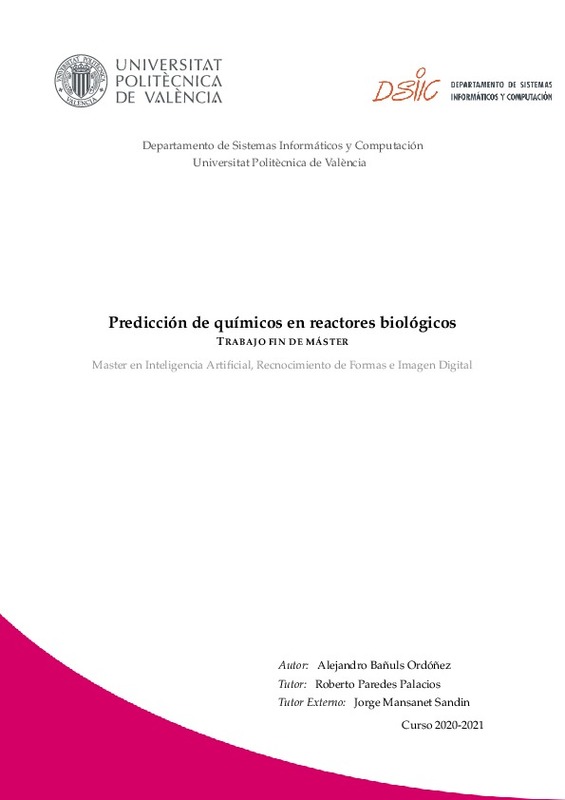|
Resumen:
|
[ES] El objetivo de este TFM consiste en predecir ocho químicos de cuatro reactores biológicos diferentes e independientes que se encuentran en una Estación Depuradora de Aguas Residuales (EDAR). Todo ello resulta en un ...[+]
[ES] El objetivo de este TFM consiste en predecir ocho químicos de cuatro reactores biológicos diferentes e independientes que se encuentran en una Estación Depuradora de Aguas Residuales (EDAR). Todo ello resulta en un total de treinta y dos variables a predecir, además de nueve variables adicionales que son comunes a los cuatro reactores. Por lo que el total de variables a predecir son cuarenta y uno. Asimismo, se tendrán en cuenta cincuenta variables más que se podrán usar como input para ayudarnos a realizar esta predicción. De cada variables existe una serie temporal, es decir, una colección de observaciones de dicha variable que han sido tomadas de forma secuencial y ordenadas en el tiempo. Se evaluarán diferentes modelos de aprendizaje automático como es el caso de Prophet, redes neuronales recurrentes (LSTM) y XGBoost. Para cada uno de ellos se analizarán los resultados obtenidos por cada variable utilizando distintos parámetros y se realizará una comparación de los tres usando el mejor en cada caso. Habrá que realizar diversas operaciones de normalizado a los datos debido a la naturaleza de los mismos (alto nivel de nulos, granularidades distintas, etc). Con todo ello, se pretende construir un sistema que sea capaz de predecir qué valor tendrán esas variables descritas anteriormente teniendo en cuenta el histórico anterior.
[-]
[EN] The aim of this TFM is to predict eight chemicals from four different and independent biological reactors located in a Wastewater Treatment Plant (WWTP). This results in a total of thirty-two variables to be predicted, ...[+]
[EN] The aim of this TFM is to predict eight chemicals from four different and independent biological reactors located in a Wastewater Treatment Plant (WWTP). This results in a total of thirty-two variables to be predicted, plus nine additional variables that are common to all four reactors. Therefore, the total number of variables to be predicted is forty-one. In addition, fifty more variables will be taken into account that can be used as input to help us make this prediction. For each variable there is a time series, i.e. a collection of observations of that variable that have been taken sequentially and ordered in time. Different machine learning models will be evaluated, such as Prophet, recurrent neural networks (LSTM) and XGBoost. For each of them, the results obtained for each variable will be analysed using different parameters and a comparison of the three will be made using the best one in each case. Various normalisation operations will have to be performed on the data due to the nature of the data (high level of nulls, different granularities, etc.). The aim is to build a system that is capable of predicting the value of the variables described above, taking into account the previous history.
[-]
|







